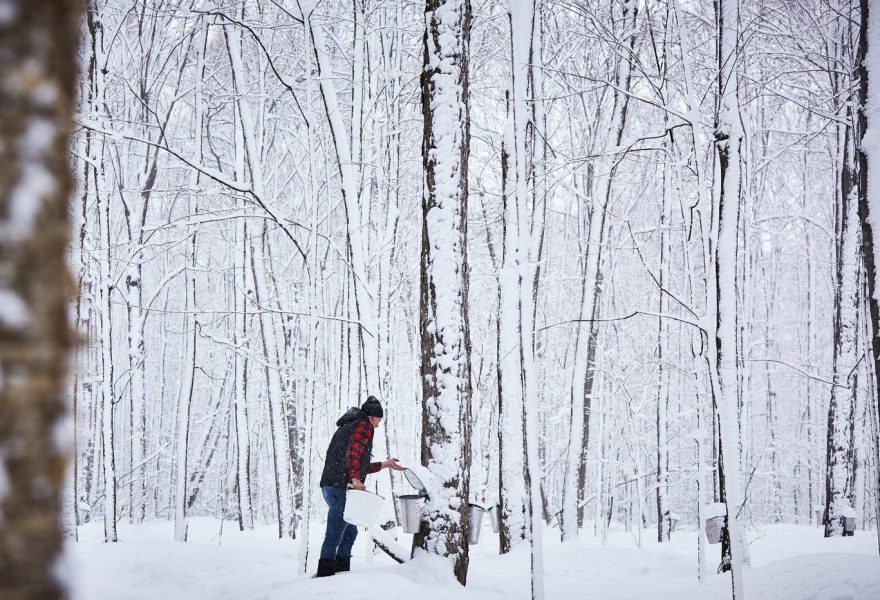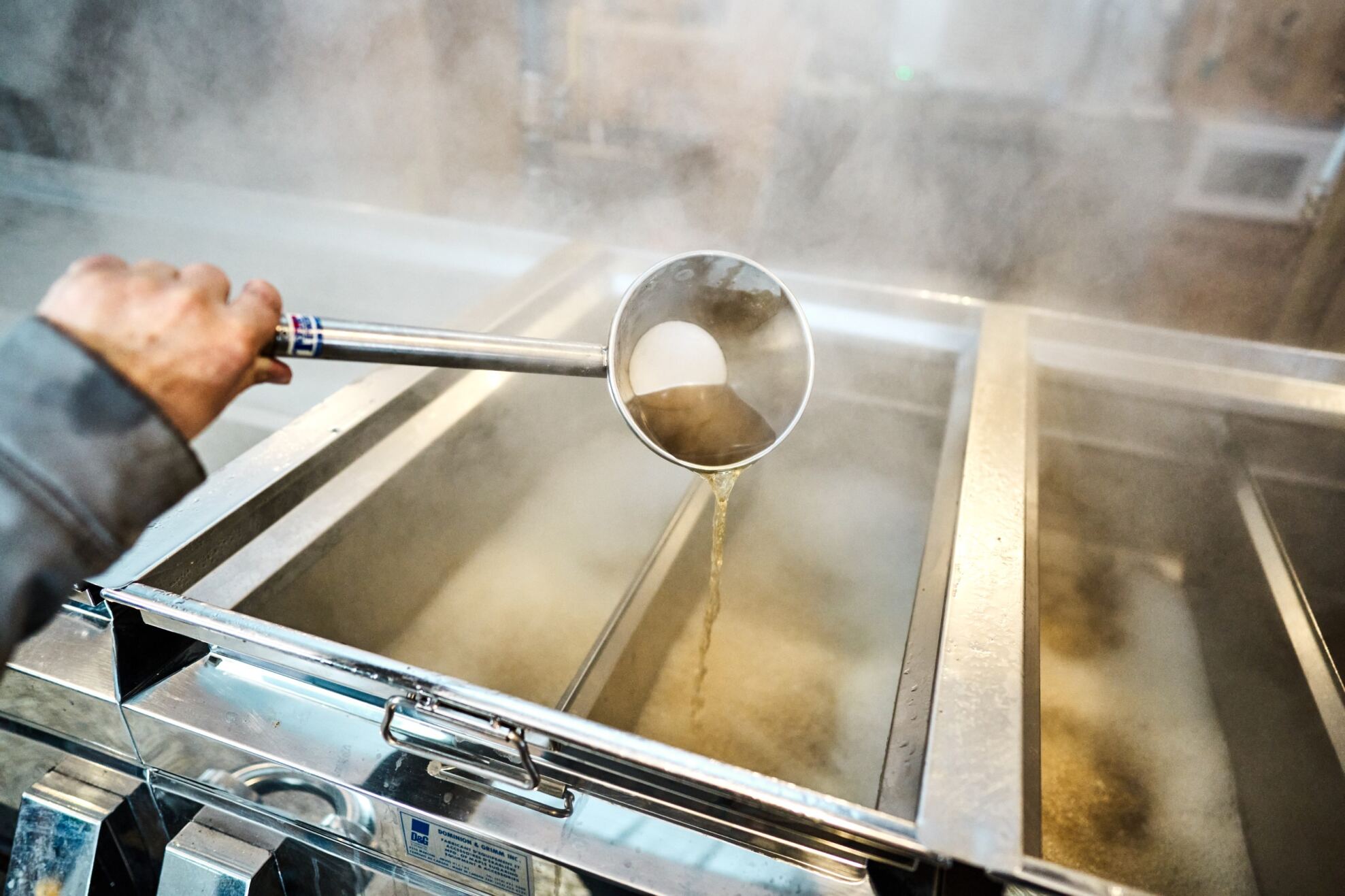A day in the life of a maple syrup farmer

Pure Canadian maple syrup is enjoyed all over the world, from pancake lovers and casual foodies to award-winning chefs; but did you know that before it gets onto our plate, nature’s best gift first goes through a unique tapping process at the hands of highly skilled producers?
Curious to learn more about maple syrup harvesting? Below we’ve outlined the unique journey of how maple syrup is made, through a day in the life of a Canadian maple syrup farmer!
Step one: extracting the maple sap
Maple syrup comes from the sap of maple trees. The trees are usually tapped between mid-February to mid-March, when the temperature reaches above 0°C in the day but drops below freezing at night.
A few weeks in advance of the tapping season, maple syrup farmers carefully drill small holes into the trees from which ‘taps’ can be inserted to extract the sap.
When the time is right, the alternating freeze-thaw cycle of night and day pushes the sap that has been stored in the roots out toward the trunk and branches, where the taps are located.
Historically, the sap used to be collected using buckets, but today maple syrup farmers take advantage of tubing systems that carry the sap directly to a special sugar shack by vacuum.
A lot of expertise is needed to manage the harvest; timing is everything and the trees must be carefully monitored to avoid any damage.
Step two: making the maple syrup
Once the maple sap is transferred to a sugar shack, maple syrup farmers place the tree sap into a large stainless-steel tank to be boiled down into a thick, sugary syrup.
Some farms use reverse osmosis to accelerate this process, concentrating the maple sap and reducing the water content before it is boiled in an evaporator.
The temperature needs to be carefully controlled to get the right product; once the sap reaches a sugar content of around 66%, it has officially become maple syrup!
What’s unique about maple syrup is that no colourings or preservatives are used during production, with the finished item derived entirely from the sap that started in the maple tree – this makes maple syrup an excellent vegan-friendly alternative to the likes of honey.

Learn more about maple syrup’s unique production process below.
Step three: mixing it up
Now you know all about maple syrup harvesting – but the process doesn’t always stop there!
Depending on what products are in demand, maple syrup farmers will boil the syrup even further to make other products like maple sugar, maple flakes and maple spread.
In the case of maple sugar, the product is made by boiling maple syrup until the liquid completely evaporates, then leaving the sugar to cool and finally filtrating it to form crystals.
Maple spread is made by whipping cooled maple syrup so that it crystallises, then whisking it again until it reaches the creamy consistency of a spread.
As with maple syrup, these products are completely natural and free from artificial additives, providing a great alternative to processed sugars and sweet spreads.
While maple syrup is the most popular maple product, the rising demand for speciality items means many maple syrup farmers are now producing maple sugar, maple spread and maple flakes as part of their annual harvest.
Step four: enjoying the product!
The harvest comes to a close in April, at which point maple syrup farmers package up their product before it is shipped to more than 70 countries around the world – but not without reserving some for personal use first!
Whether in the form of syrup or sugar, there are so many ways to incorporate the natural richness of maple into your cooking and baking – check out our huge range of maple syrup recipes to find out how.
A natural source of energy
Maple syrup is a natural source of energy. Check out our recipes for food and drinks before, during, and after exercise.
)